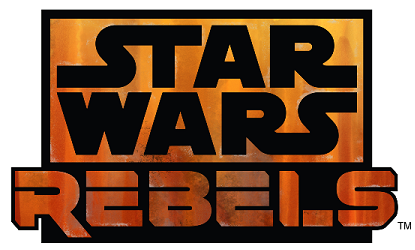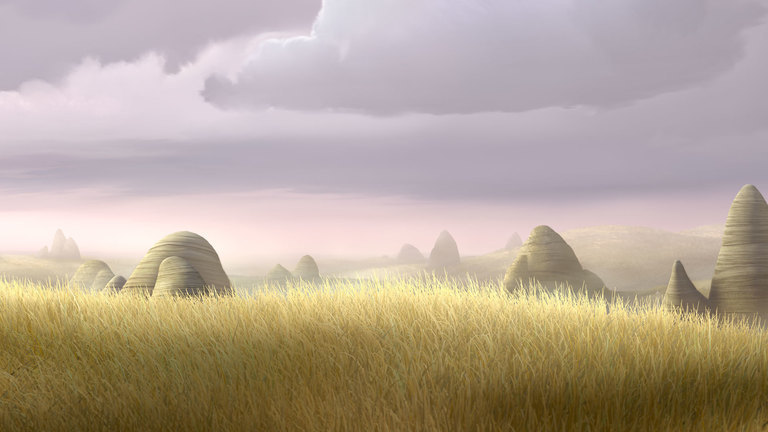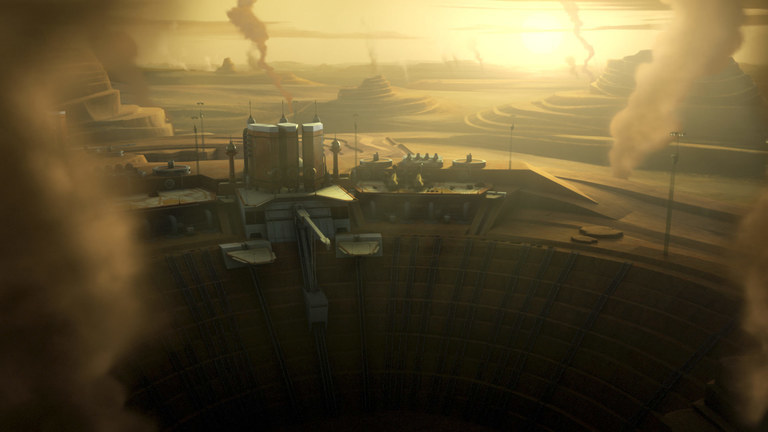It's about time I put my money where my mouth is and did some worldbuilding of my own.
Despite being one of the few single-biome planet types that actually seems plausible, the desert planet concept is a bit overused. (And...a...bit...dry. ThereIsaidit.) So no desert planets right now. We'll go with the polar opposite: ice planet (I did it again.)
I tend to think that outer space, as a general rule, is cold. Punctuated by the points of light we call stars, the lone campfires in the interstellar wasteland. So a cold planet is more indicative of space than a hot one.
Probably the most prominent ice world in sci-fi is Hoth from
The Empire Strikes Back. Of all the planets in the original Star Wars trilogy, it's my favorite; it's really the only one that gives the feel of a hostile environment: Luke nearly died of exposure, and the Rebels had to work to adapt their snowspeeders to function in the cold, necessitating beasts of burden (which still froze to death at night). It's clear that Hoth is someplace you don't try to live on unless you're an enemy of the state. We'd only colonize such a world in real life if we didn't have anywhere better to go (which isn't impossible, or even improbable; we'd be ecstatic to find a planet like Hoth in this day and age).
But I think we can do better. Let's try to do better.
In eighth grade I read
Ender's Game, then I picked up its sequel,
Speaker for the Dead, which is not a horror novel, title notwithstanding. (Protip: I definitely do not recommend
Speaker for eighth graders; it's too heavy.) Early in the story, the protagonist is on a planet called Trondheim, which is mostly frozen except at the equator. The fleeting description of this planet intrigued me at age 13, as it was the first planet I had seen in fiction that couldn't be summed up in one word. It's
mostly icy, but the equator is temperate. From what I hear,
Star Trek's Andorian homeworld is similar.
So a planet like that, even with more extensive icecaps than Andoria,, would be appealing for colonization. But need habitation be restricted to the tropics, with endless frozen wastes covering 90% of the planet's surface?
Let's try to do even better.
The now-invalidated Star Wars Expanded Universe has a world called Belsavis. It's like Hoth, but with warts.
I haven't played
The Old Republic so I don't know how much explanation is given for these temperate rifts. It's just as well. More fun that way. I think they're analogous to "hotspots", localized areas of activity over which the Earth's tectonic plates drift, resulting in the formation of island chains like Hawaii (at least I think that 's how they work). These rifts in the global glaciers could be the result of geothermal heating, though not so intense that these rifts are dangerously volcanic. If the plates drift on this planet, maybe the rifts are transient, moving over time as land is ceded and reclaimed by the glaciers.
I think we now have enough ideas to build a complex ice world, which I am calling Coldstone. Below is my novice attempt to provide a visual.
 |
| Please don't laugh. |
To ensure that the planet stays tectonically active, let's give it 7 or 8 small moons, gravitationally pulling on the planet in complex ways.
A significant portion of the planet is subsurface ocean, home to aquatic creatures living without sunlight. These include gigantic eel-like monsters that occasionally punch through thin regions of ice to prey upon the few creatures that live on the ice above, in a variation on the much-overused "sandworm" trope.
I'm going to make the plants blue.
This discussion suggests that it could happen if plants photosynthesized with
phycocyanin instead of chlorophyll. I don't know if there's a good reason for plants to be blue, but life doesn't always have to take the most efficient route, and I like the idea of blue plants on my ice planet. I think they also incorporate metals into their interior structure - maybe copper or aluminum - to conduct heat out of the ground and warm themselves. They store water in large spherical fruits...that have thick fur to warm themselves. Furry fruits! Colonists are divided on whether they're tasty or gross.
Most human habitation is in the tropics, but there are settlements in
some of the rifts, connected by trains that travel on railroads in
tunnels through the ice. Each rift has a unique ecosystem, existing in
near-total isolation from the others. Some of the rifts are just lakes
though. And on the ice itself, there are isolated encampments of survivalists, hermits, criminals, or hunters.
I did mention some creatures do try to live on the ice itself. I recently played through Capcom's
Lost Planet: Extreme Condition, a game whose central premise is survival on an ice planet. Gameplay is rotated between fighting human enemies on foot, fighting human enemies in small mecha, and fighting alien creatures collectively referred to as Akrid. These creatures contain in their bodies a liquid referred to in-game as "thermal energy" or "T-ENG". It glows orange and serves as a universal energy source for colonists; your supply is continuously counting down and you'll probably freeze to death if you run out (evidenced by Akrid that freeze solid when killed and can be shattered).
I can only begin to guess how T-ENG works. If I had to hazard a guess, I'd say the Akrid synthesize something like liquid charcoal in their bodies, which burns very, very slowly, keeping their internal body temperatures normal. The appeal of a fossil fuel synthesized by living organisms is obvious. A valuable resource is a good way to motivate stories set on an alien planet.
So: good idea, or just cliche and/or hopelessly derivative? Should I do more of this kind of post? Leave a comment if you have any ideas of starting points for new planets.










